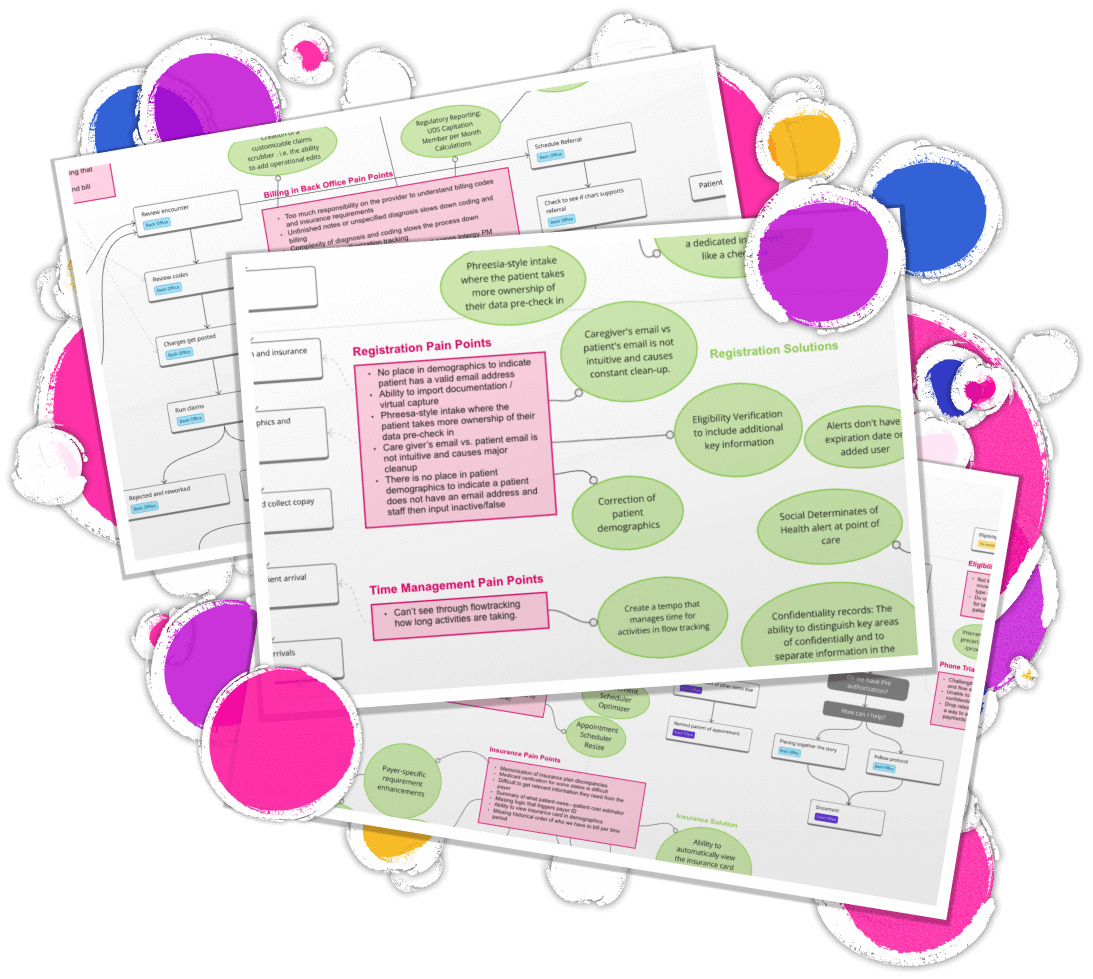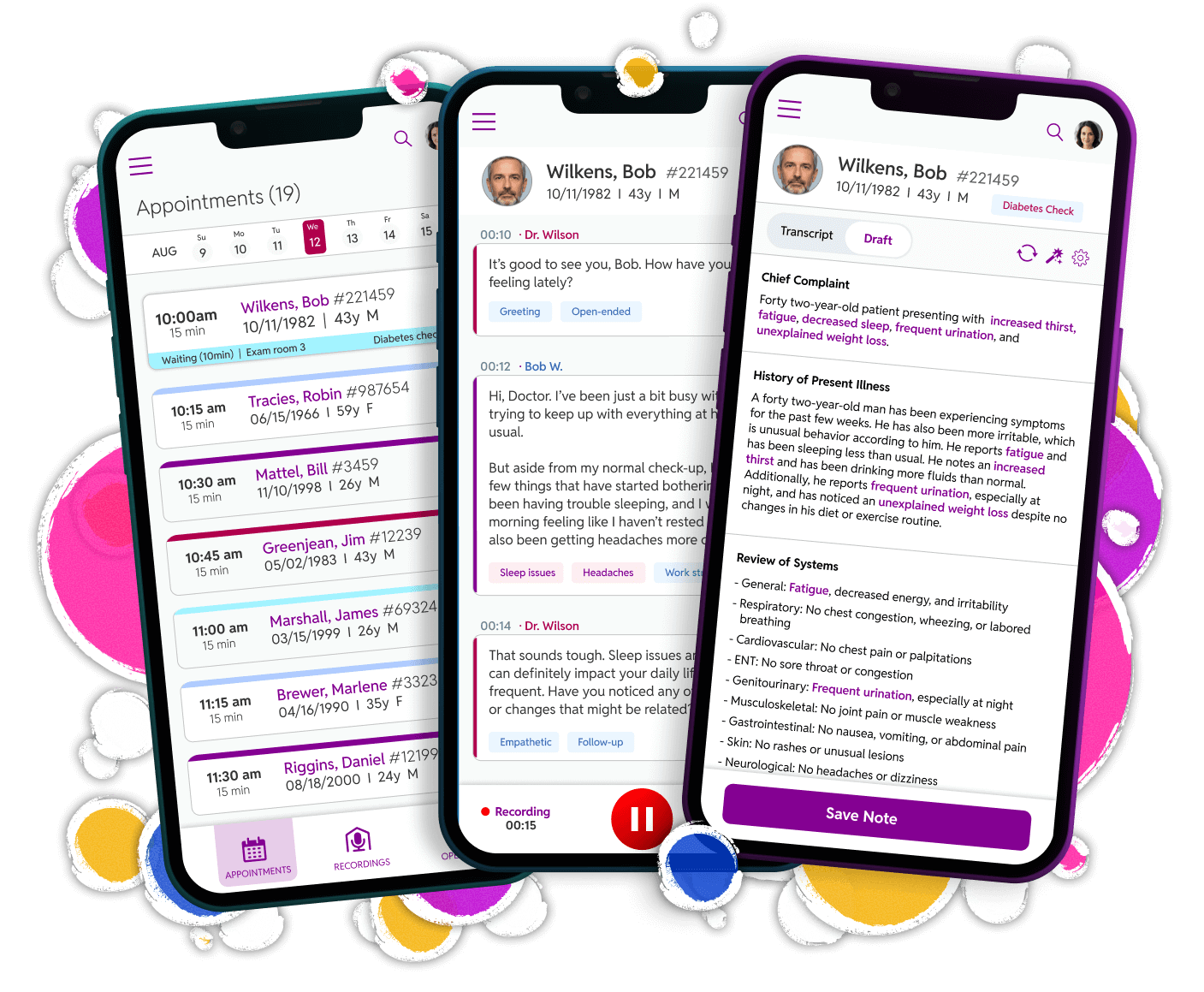From Voice App to Enterprise AI Platform
How I Led UX Design for an AI-Powered EHR Platform That's Helping to Transform Priorities Across a $100B Private Equity Portfolio
The Challenge: Disrupting Decades-Old EHR Monopolies
Here's what most people don't realize about healthcare technology: the major EHR platforms are monolithic code nightmares built decades ago by companies that add features, not create products. When Greenway Health - part of Vista Equity Partners' $100B portfolio - decided to build something different, they weren't just creating another voice transcription tool. They were architecting the future of healthcare.
The initial vision seemed straightforward: help burned-out physicians reclaim their "pajama time" through ambient voice technology. But as Lead UX Designer, I saw the bigger opportunity. This could evolve from a simple sidekick app into a full AI-powered EHR platform - one that could serve Vista's 500 million users across 90+ enterprise companies.
The stakes were massive. Healthcare providers were drowning in documentation, spending 6 hours daily on EHRs with 2.5 hours bleeding into personal time. Chronic underbilling was costing practices millions. Providers were missing federal MIPS money due to poor eCQM documentation. And 80% of our patient portal traffic was mobile - yet most EHR platforms barely worked on phones.
Note: Screenshots shown are design mockups as the actual platform remains proprietary and in beta.
Industry
My Role
Impact
Scale
Discovery: Understanding Every Healthcare Persona
Building medical platforms means designing for seemingly countless personas - from front desk staff juggling appointments to billing specialists fighting denied claims to providers making life-or-death decisions. Each persona needed what felt like a completely different product, yet everything had to work seamlessly together. An additional challenge was the fact that while our development teams were building the first iteration that was fundamentally pretty simple, the design team had to work months or years in advance.
Our research approach combined traditional UX methods with cutting-edge analytics:
- Clinical Shadowing: 45+ hours across specialties understanding real workflows
- Stakeholder Interviews: 30+ providers, plus regulatory, compliance, and billing teams
- Data Analysis: Pendo session replays revealing rage clicks and dead zones
- Journey Mapping: 100+ daily schedule patterns across diverse user types
- Focus Groups: Regular sessions with blunt provider feedback (they don't hold back)
Using Pendo and Domo, I tracked every click, every hesitation, every abandoned workflow. One discovery helped me to build a case to change an issue that I had concerns with previously. An icon we'd hidden behind a menu was being accessed more than some of our surface-level features. Real data beats assumptions every time.

From MVP to Platform: The Evolution Story
What started as a voice transcription app has grown 4-5x in scope. Here's how Clinical Assist evolved:
